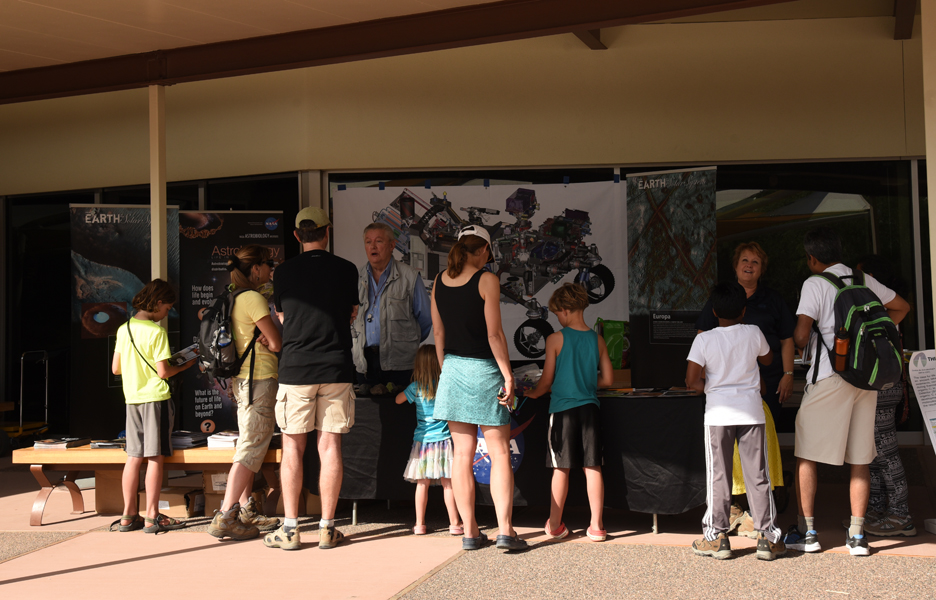-
Death Valley Celestial Centennial – MarsFest Symposium
April 25, 2016 / Written by: Barbara Vance
Astrobiology booth staffed by Jack Farmer and Sheri Klug both from ASU. Image Credit: Barbara VanceFew places in the United States have night skies that are as dark and inviting as Death Valley. There are also very few places in the world where the extremes of our planet can offer a look into what may be possible in our Solar System and beyond. In conjunction with the National Park Service’s 100th anniversary, scientists and the public met in Death Valley for an opportunity to learn more about our planet and solar system, and to learn how that knowledge helps plan for humans to explore beyond Earth.
There are several planetary analog research sites within the boundary of the Park’s rugged and other worldly-like terrain, enabling researchers to study Mars-like environments to test the Mars rovers, including the upcoming 2020 mission to Mars. Scientists from NASA and the SETI Institute along with Death Valley park rangers shared this little known, but extremely important, use of our public land with MarsFest participants. Death Valley has been used as an analog site for other planets,
A weekend of talks, field trips, exhibits, and a dark-sky star party highlighted the weekend of April 7-9, 2016, with nearly 500 participants at some sessions.
This event was sponsored by the NASA Astrobiology Institute (NAI), SETI Institute, National Park Service, NASA Ames Research Center, NASA Goddard Space Flight Center, JPL, and the Death Valley Natural History Association.
- The NASA Astrobiology Institute Concludes Its 20-year Tenure
- Global Geomorphologic Map of Titan
- Molecular Cousins Discovered on Titan
- Interdisciplinary Consortia for Astrobiology Research (ICAR)
- The NASA Astrobiology Science Forum Talks Now on YouTube
- The NASA Astrobiology Science Forum: The Origin, Evolution, Distribution and Future of Astrobiology
- Alternative Earths
- Drilling for Rock-Powered Life
- Imagining a Living Universe
- Workshops Without Walls: Astrovirology